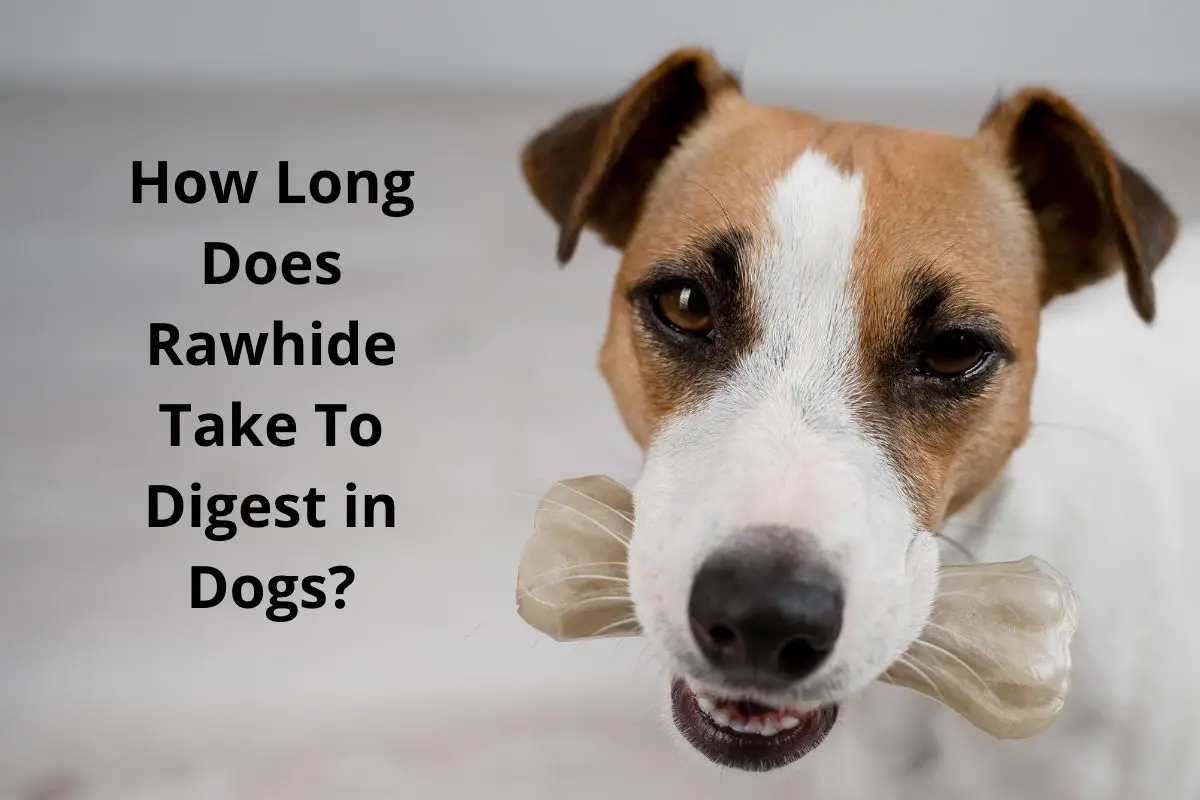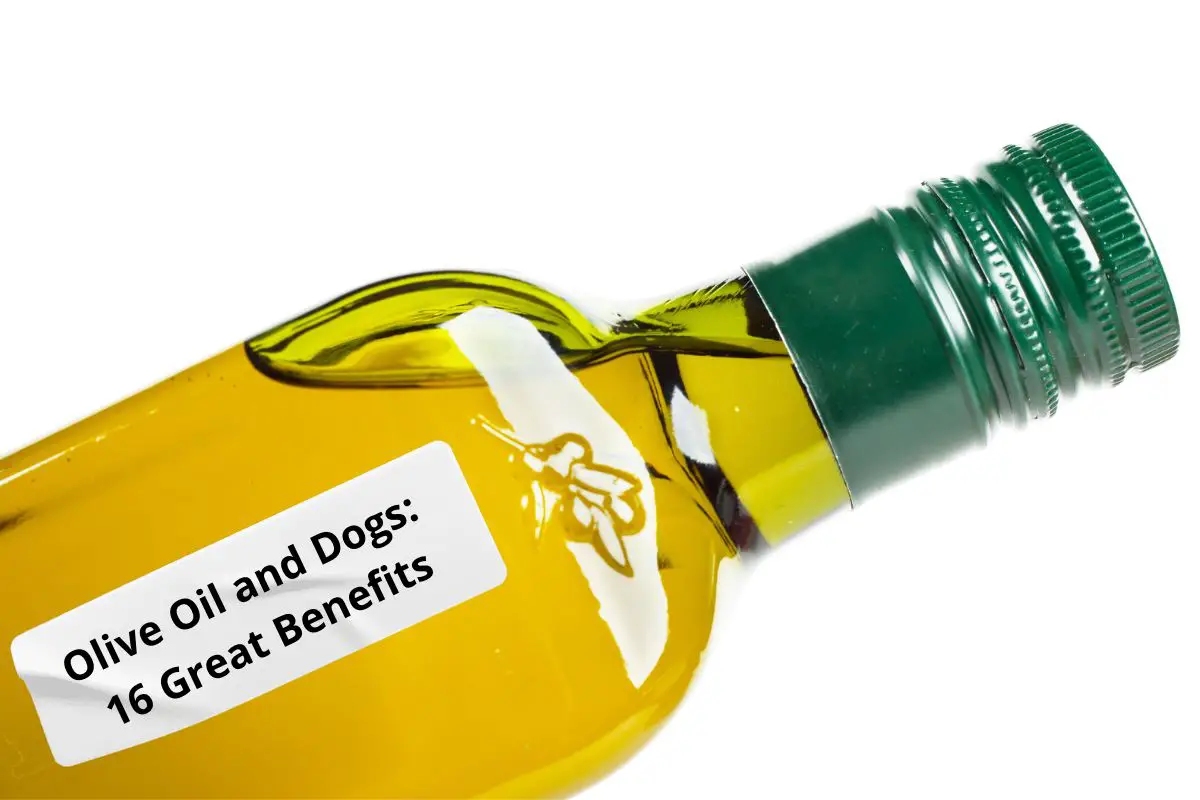This post contains affiliate links.
Dogs love livers. If you throw a small piece in front of your dog, he’ll consume it before you can say Jack Robinson! While it may be a doggy delicacy packed with vital minerals and vitamins, it’s important to know if it’s safe to include in your dog’s diet and understand how it can harm him.
It is safe to feed liver to your dog as long as you keep it to moderate amounts. Liver is rich in proteins, vitamin A, and various B vitamins. It is also a good source of iron, copper, phosphorus, and essential fatty acids. The ideal amount to feed your dog will depend on his age, weight, and size.
In the rest of the article, we will discuss why liver is safe for your dog to eat as well as its potential benefits. We will also take a detailed look at how much to feed your dog, what type of liver is best and where to find them, and how to properly prepare it for your dog’s consumption.
Table of Contents
Why Is Liver Safe for Your Dog to Eat?
Like other organ meats, liver can cause a lot of confusion when it comes to their consumption. Okay, it looks weird and has a soft, silky texture, but the major concern is that it can accumulate dangerous and toxic substances from the animal’s body. Well, the good news is that the liver does not store toxins, but rather, it filters and neutralizes them.
Another common concern about feeding liver to dogs is that the liver may be from a sick or infected animal. Of course, you should only consume meat from healthy animals, so it is safe to feed liver to your dog as long as it’s from a healthy and trusted source.
Now, because liver is very rich in vitamins and nutrients, too much consumption can cause problems for your dog. Read on to learn more about how much to feed your dog and what can happen when you feed him too much liver.
Why You Should Feed Liver to Your Dogs
There are several reasons why you should include liver in your dog’s diet. Without a doubt, it is rich in vitamins and minerals, but your dog also loves it. Here’s why your dog should be eating liver:
Your Dog Loves Liver
The liver isn’t as hard to chew as the regular meat, so it’s not surprising that dogs love consuming it. Liver also tastes great and has a great flavor and crunchy texture that dogs can’t resist. You can serve it to your furry friend raw or cooked, depending on what he prefers.
It Is Beneficial to Your Dog’s Liver
Not only do dogs love it, but it is also beneficial to their liver. Your dog’s liver is a powerhouse organ that’s performing several vital functions in the body. Because of the nutrients it contains, feeding liver to your dogs can boost his overall liver health.
It Is High in Nutrients
Liver is a very nutrient-dense food. As mentioned earlier, it is a great source of vitamin A and proteins. It is also packed with other nutrients like niacin, iron, phosphorus, zinc, and copper and will provide your furry friend with vitamin B, omega-3, and omega-6 fatty acids. Here is a look at some of the key nutrients it contains:
- Protein: Liver is a good source of protein, an important nutrient in any dog’s diet. It helps maintain several functions in the body, including tissue repair, muscle growth, immune functions, and oxygen transportation.
- Vitamin A: It is essential for the proper function of the digestive and reproductive organs. It is also a good antioxidant.
- B vitamins and Folic Acid: Essential for blood production, thus preventing anemia. It is also crucial in maintaining mental health and preventing fatigue.
- Vitamin D: It helps to boost the immune system and fight against cancerous growths and other infectious diseases. It is a very important muscle and bone strengthener.
- Vitamin E: This nutrient is essential in the aging of your pet. It slows down signs of aging and promotes healthy skin cell production. It is essential in preventing circulatory complications such as heart disease and arteriosclerosis. It also improves fertility, prevents cataracts, and boosts the immune system.
- Iron: A very important component of hemoglobin. It helps to transport oxygen to the blood cells, which translates to increased strength and endurance in your dog. Iron is also very important in fighting diseases and infections. Iron deficiency reduces the number of antibodies and consequently reduces the immunity of your dog.
Liver also contains other important minerals like zinc, copper, and phosphorus that are important in promoting and maintaining good health in your dog.
It Is Easy to Include in Your Dog’s Diet
You can easily add liver to your dog’s already healthy diet. He’ll love it once he gets the taste for it. It can be served raw, cooked, or dry. Not all dogs love to eat it raw. However, your dog is bound to love it in one form or the other. It is also cheap and readily available.
What Kind of Liver Should You Feed Your Dog?
While your dog can consume most animal livers, some may not be suitable for him. Also, some are more nutritious and healthier than others. Beef liver, pork liver, duck liver, lamb liver, goat liver, turkey liver, and chicken liver are some of the best for dog consumption.
Avoid wild game liver because you may not be able to guarantee its quality. For example, feeding your dog liver from a deer infected with liver fluke may cause illness to your dog. Even if you cook a deer liver with larval tapeworms, it won’t kill them.
Let’s take a closer look at the nutritional composition of some of these choice livers.
Beef Liver
Beef liver is higher in several minerals than other types of liver. According to the USDA, a 113 g of raw beef liver contains:
- 23 g of protein
- 4.4 g of carbohydrates
- 4.1 g of fats
- No naturally occurring sugars
- No fiber
- 78 mg of sodium
The nutrition profile of beef liver shows that it is a lump of nutrient-packed organ meat.
Other nutrients such as Vitamin B12, copper, Vitamin A are present, and more than the recommended daily intake.
Other micronutrients are also present, including:
- Folate
- Phosphorus
- Iron
- Pantothenic acid
- Selenium
- Niacin
- Zinc
- Vitamin B6
Chicken Liver
Chicken liver is protein-dense and high in vitamins and fat. The combination of these nutrients makes it suitable for underweight dogs and young, growing canines. Here is a closer look at the nutrition profile of chicken liver:
In a 100g serving of chicken liver, there are:
- 165 calories
- 6 g of fats
- 2 g of saturated fat
- 564 mg of cholesterol
- 1 g of carbohydrate
- No naturally occurring sugar
- No dietary fiber
- 92 mg of sodium
- 26g of proteins
Its micronutrient profile is rich as well. It contains:
- 12.9 mg of iron
- 442.0 mg of phosphorus
- 315 mg of potassium
- Vitamins A, B1, B2, B3, B5, B6, and B12
Lamb Liver
Lamb liver is a nutrient-rich protein source and is relatively low in fat. One serving of lamb liver contains 118 calories and 17.3 g of protein. In a 3-ounce serving of lamb liver, you’ll find 4.3 g of total fat and 314 mg of cholesterol. It has no dietary fiber but contains copper and vitamins A, B2, B3, B5, B12.
Goat Liver
Goat liver is as nutrient-dense as any other animal’s liver. It has zero sugar, dietary fiber, and trans-fat.
Eighty-two grams of goat liver contains:
- 155 calories
- 377 mg of phosphorus
- 12.3 mg of copper
- 4.19 mg of iron
- 17 g of protein
- 9.2 mg of zinc
- Vitamins A, B, and C
Pork Liver
The liver obtained from pork contains 66% of proteins, 9% of carbohydrates, and 25% of fats. Pork liver is great for young and growing dogs as they need more proteins and fats.
A raw pork liver weighing 373 g contains:
- 97g of protein
- 16g of total fats
- 183mg of sodium
- 560mg of potassium
- 14g of carbohydrates
By percentage, Vitamin A, Vitamin C, Calcium, and Iron take 1343%, 147%, 2.9%, and 371%, respectively.
Turkey Liver
A raw liver from turkey and weighing 100g contains:
- 5.5g of total fat
- 414mg of cholesterol
- 131mg of sodium
- 214mg of potassium
- 0 carbohydrates
- No sugar
- No dietary fiber
- 18.3g of proteins
- Vitamin A
- Vitamin B6 (1mg)
- Vitamin B12
- Vitamin C
- Vitamin D
- Vitamin E
- Vitamin K
- 20mg of calcium
- 8.9mg of iron
- 24mg of magnesium
- 279mg of phosphorus
- 3.4mg of zinc
Considering the nutrient make-up of turkey liver, it is relatively high in protein and fats. That makes it suitable for aged dogs and it can be mixed with other organ meats for consumption.
Where to Find Liver for Your Dogs
There are several places to find animal liver for your dog. The availability will depend on where you’re located in the world. To ensure maximum quality and safety for your dog, we’ve listed out the best places to look when you need to feed your dog some.
Some of these places include the abattoir, a butcher’s shop, local farmers, and farmer’s markets. It is mostly sold by the pound. You can purchase liver in a single piece or pre-sliced. Let’s take a more detailed look at these places.
Abattoir
This is the first place that comes to mind and is probably the best place to get animal liver (and other organ meats) for your dogs and well, for yourself.
Except the abattoir is of low quality or standard, it is the same place meat vendors get their meat from. The level of cleanliness maintained there is regulated by the government; the health status of the slaughtered animals is also regulated by the concerned governmental agencies. So, you should be able to get a healthy liver for your dog.
Another advantage of using the abattoir is that it is considerably cheaper to get it here than from other sources.
Butcher’s Shop
A butcher’s shop is another good place to get animals’ livers for your dogs. It is usually easier to get the liver here, especially if the shop is in your locality. However, you must ascertain the hygiene level of that shop as the laws holding a butcher’s shop in some places is not as stringent as the ones in an abattoir.
However, it is better to buy from a butcher’s shop than it is to buy from a supermarket. First, you can get it at a lower price, and you can also ask questions about the liver you’re buying. You may not be able to get answers to some questions in the supermarket.
Local Farmer
These are the breeders of the animals. They are consistently in proximity to them, know what they eat, and the diseases they struggle with. As much as the abattoir is the best option, if the local farmer is honest or you live in an area where there’s active beef production, their farms can also be a good place to get animal liver for your dog.
The local farmer knows the healthiest of its animals, so he may know what he knows best. However, animals slaughtered on the farm might not necessarily meet the quality requirements of an abattoir.
Farmers Market
Sometimes, animals go from the farm to the abattoir and the market. Other times, animal meat skips the abattoir and gets to the market directly from the farm. In the market, you will find many farmers with the type of liver you’re looking for. You get to buy livers at a lower price here and you can nicely request that they cut it exactly the way you want.
Dog Food Stores
Dog food stores are also one of the places to buy good liver for your dog. It doesn’t matter if the store is physical or online. As long as you can guarantee the quality of their meats from other dog owners, you can always buy from them.
They know what to look for when purchasing livers from farmers or the abattoirs, which eliminates the challenge of looking for good quality liver for your dog.
You can also get liver from the supermarket and some grocery stores. One issue with these places is that it is hard to ascertain the health of the animal from which the liver was gotten.
Another issue is the storage of these organ meats. Some supermarkets keep organ meats for so long that some of its nutrients may have been denatured. Ensure you’re buying from a store where the meat has been properly preserved and where there’s no risk of salmonella or other harmful bacteria.
Any fresh meat not stored or handled properly can accumulate microbes and parasites that can be very harmful to your dog. Once you buy the meat, keep it properly refrigerated as it can turn rancid very quickly.
How Much Liver Should You Give Your Dog?
Moderation is important when it comes to feeding liver to your dogs. You can safely feed your dog some livers once or twice a week. Ideally, liver should be added to your dog’s normal diet as a nutritional supplement.
The exact amount of liver treats to give your dog will depend on its size and weight. For small-breed dogs, it is safe to give them one or two treats twice a week. If you have a medium-sized dog, he can have 3 to 4 treats twice a week. Large breed dogs can still afford to get 5 or 6 treats twice a week.
Ideally, liver and other organ meats should not account for more than 25% of your dog’s diet. If liver is the only organ meat, it should make up about just 5% to 10% of your dog’s diet. If your dog is not used to eating livers, start slow and add it to his diet in small amounts. When you feed him liver, check out his reaction and if it causes any stomach upsets or loose stool, reduce the quantity until his digestive system adapts.
What Happens When Your Dog Eats Too Much Liver?
As with every good thing, there is a limit to how much liver your dog can consume. When your dog gets too much liver in his diet, he’s bound to have an excess of certain nutrients and vitamins. Going overboard with liver consumption can result in some severe consequences.
Hypervitaminosis A
This is a condition where the level of vitamin A in the body becomes too much. This condition leads to toxicity in the body and, consequently, some health issues.
Hypervitaminosis A is mostly caused by consistently consuming foods that are high in vitamin A, such as the liver.
Its symptoms mostly manifest when the dog approaches middle age. This is because most dogs are on a diet for most of their early lives. The symptoms mostly include arthritis, stiffness, or immobility of the joints. Arthritis mostly affects the neck of the dog. In severe cases, the dog is unable to move its neck. Other joints can also be affected.
Bone Problems
For dogs that eat raw liver or unprocessed liver, there is a risk of getting bone problems. This is because the level of minerals in the liver is untouched before it is consumed. Dogs that eat more than three servings of the cooked liver in a week are also at risk of bone problems.
Copper Toxicity
Too much liver can lead to the accumulation of copper in the body. Copper toxicity can cause several problems in some dogs, especially Bedlington Terriers, Dobermans, West Highland White Terriers, Skye Terriers, Dalmatians, and Labrador Retrievers.
Some of the diseases that can result from copper toxicity include weight loss, reduced appetite, excessive peeing, diarrhea, and intermittent vomiting. Copper poisoning can lead to the death of your dog if not treated.
Death
Dogs enjoy eating liver, but when they get too much of it, it leads to toxicity and excess vitamins in their body, leading to health issues discussed above. If these issues are left unchecked, they can lead to the death of your beloved pets.
How to Prepare Liver for Your Dog
Each dog has its preferences when it comes to eating liver. There is a general consensus that meat should be given to dogs raw. This allows him to enjoy all the benefits of the meat in its pure form since cooking may result in nutrient loss. Feeding your dog raw liver has its advantages and disadvantages.
Which Is Better: Raw or Cooked Liver?
As mentioned earlier, cooking can kill some of the nutrients in the liver. Some nutrients are temperature-sensitive and even the smallest heat can kill them off. According to a paper published by the USDA in 2007, cooking or simmering liver can result in:
- 40% of iron, magnesium, and vitamin A
- 55% of niacin and B6
- 35% of folate
- 30% of phosphorus
- 25% of copper and vitamin C
Nutrients that were minimally affected during heating were calcium, beta carotene, and choline.
So, serving raw liver to your dog provides more benefits than when cooked. However, it must be from a trusted source and you should be able to guarantee its quality.
While cooking liver may result in the loss of some of its nutrients, it can be an opportunity to throw in some other ingredients to add to its taste and quality. Also, if you’re unsure of the quality of the meat, it’s better to cook it before giving it to your dog. Some raw livers, especially chicken liver, may contain salmonella and other food poisoning bacteria.
How to Cook Liver for Your Dogs
Cooking liver is a great way to prepare a delicious nutrient-rich treat for your dog. It’s not difficult to do, and you don’t need a top chef’s skills to make a great treat. We recommend avoiding aggressive seasonings and additives like curry, salt, pepper, and butter as they can be bad for your dog’s health.
Here is an easy way to cook liver for your dogs:
- Take the liver out of its packaging or container. If it’s frozen, be sure to thaw it first in cold water or in the microwave.
- Get rid of any dirt or debris on the liver by thoroughly rinsing it with cool water.
- Place the liver or pieces (if it is pre-cut) in a pot and fill it with water.
- Turn up the heat on the stove.
- When the water begins to boil, reduce the heat and let it simmer for about 15 to 20 minutes.
- Cut a slice of the liver to check if it’s tender. If it’s tender, turn off the heat and take the liver out of the pot and toss it onto a plate.
- Let it cool before dicing it up into smaller pieces for serving.
Other Ways to Prepare Liver for Your Dog
If your dog doesn’t like boiled liver, you can try out other options. The best thing is to find out what your dog likes and stick with it. Here are other ways to add liver to your dog’s meal:
- Make dehydrated liver treats. You can make your own dehydrated treats instead of buying them. Subject the livers to a temperature of 145℉ (63℃). This is different from cooking as the liver is still able to retain most of its nutrients.
- Use a “whole prey” grind. You can find these products at many raw food suppliers and stores. Whole prey grinds contain the ground-up of an entire animal, including its fresh meat, organ meats, glands, intestinal tract, and bones.
- Sear it in a frying pan. Heat butter or olive oil in a frying pan over medium heat and lightly sear the liver to change its texture.
- Grind it up. You can grind the liver up in a food grinder and mix it with other meats anytime you need to feed your dog some liver. This way, you can portion into daily ratios and store it in the freezer.
Conclusion
Liver is a tasty and highly nutritious treat for your dog. It is safe for him as long as you feed it to him in moderation. Feeding liver to your dog provides him with a healthy amount of proteins, fat, and vitamin A. Liver is also a good source of iron, copper, zinc, phosphorus, and niacin.
Your dog also gets a healthy dose of B vitamins, omega-3, and omega-6 fatty acids. Be careful not to give your dog too much of this nutrition-packed treat as it can cause serious health problems or even death. It is okay to include it in his diet once or twice a week.
There are several ways to feed your dog liver. You can serve him raw, cooked, baked, dehydrated, or ground. No matter the method you use, ensure your dog is getting this tasty and highly nutritious food.
Sources
- Dogs Naturally: Why Organ Meat is Important for the Raw Fed Dog
- Domku Café: Top Four Benefits of Beef Liver to your Dog
- Pet Snacks: Top 10 reasons to Feed your Dog Liver
- The Possible Canine: All About Liver
- Very Well Fit: Beef Liver Nutrition Facts and Health Benefits
- The Nest: Is Chicken Liver Bad for Dogs?
- Nutrition Optimiser: Chicken Liver Nutritional Value and Analysis
- Check Your Food: Lambs Liver
- Nutritionix: Pork Liver
- Eat This Much: Turkey Liver; All Classes, Raw
- VCA: Vitamin A Toxicosis in Dogs
- Bossier City: Dangerous Foods for Cats & Dogs
- Bark: Raw Dog Food Primer: Everything You Need to Know
- Puppy Tip: A Quick Guide to Cooking Liver for Dogs
- Campfire Treats: Can Dogs Eat Organ Meats? In Fact, They Should. Learn Why
Mrdogfood.com is a participant in the Amazon Services LLC Associates Program, an affiliate advertising program designed to provide a means for sites to earn advertising fees by advertising and linking to Amazon.com. We also participate in other affiliate programs which compensate us for referring traffic.




